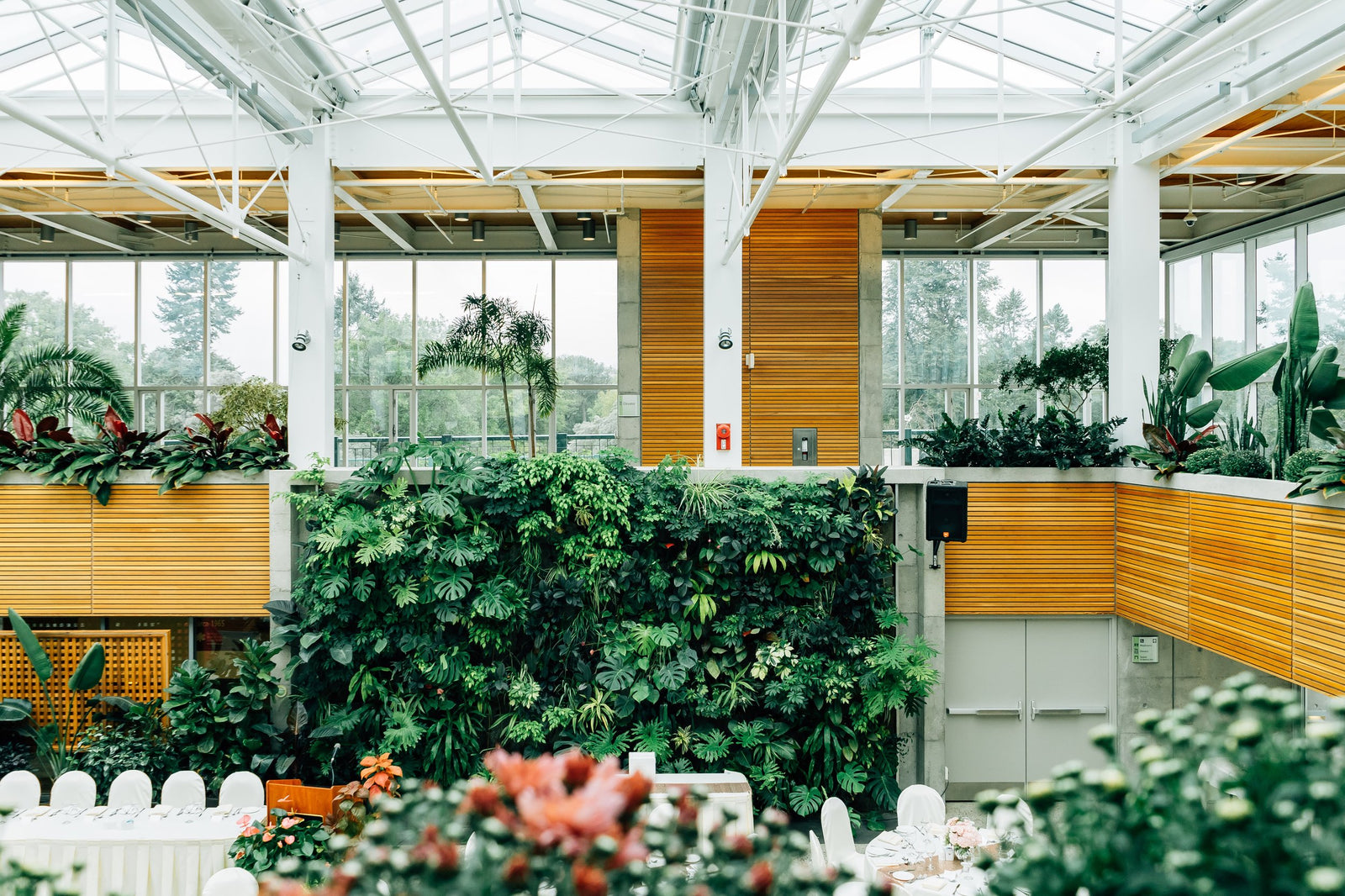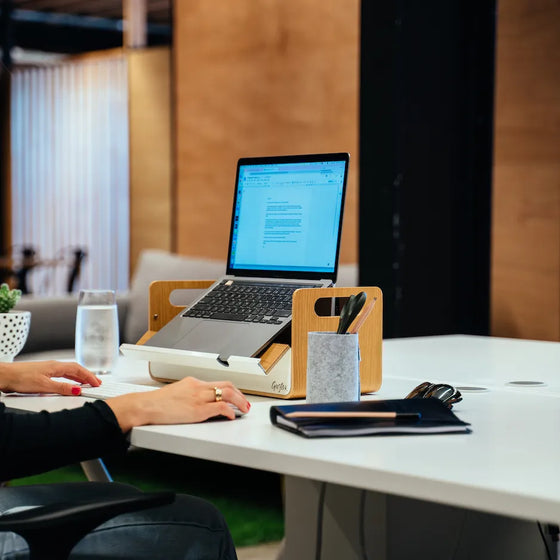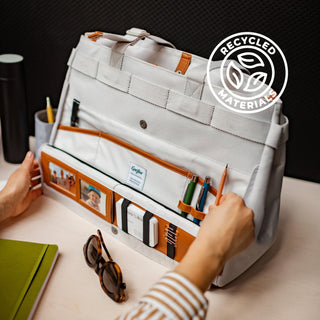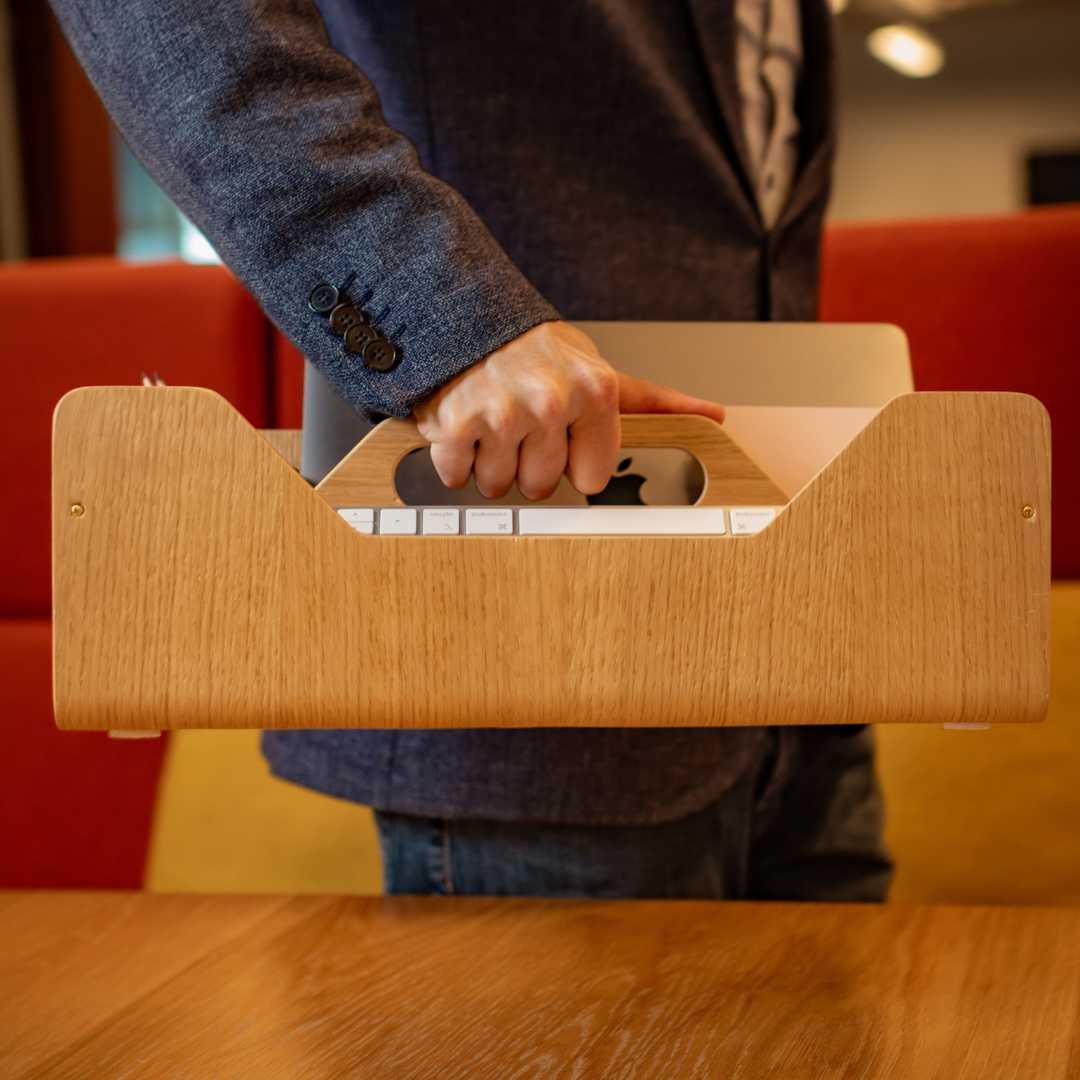The green office

What does sustainability mean in the workplace?
Companies have a lot of responsibility - towards the environment, their employees and society. Therefore, if you want to run a green office, you have to think a bit further than recycling and organic food in the communal kitchen.
Sustainable leadership and corporate culture are designed to be mindful of resources. This is very much about environmentally friendly measures and human resources - for example, fair working conditions and a positive corporate culture. And economic success can also be achieved through sustainable strategies.
The basis: sustainable office planning
The path to a sustainable office begins with choosing the office location and planning the design. There is a whole catalogue of requirements for sustainable construction and refurbishment - for orientation, it is helpful to look for certifications for sustainable buildings.
Quo Vadis? The right location
The choice of location determines whether your employees can get to work easily by public transport or are dependent on the car. Are there green spaces nearby, or can you plant terraces and facades yourself? Moreover, moving into a certain neighbourhood always boosts the local economy.
Flexible and hybrid offices save resources
When you rent space, you should think about the daily utilisation of the office. For example, would it be cheaper to rent less office space and allow for hybrid working or hot desking? When designing the interior, think about your company culture. What places and tools are conducive to your team's productivity? Activity-based design, for example, creates flexible zones for different work scenarios - here, resource conservation and social sustainability are already included in the space concept.
Digital working and green IT
Digitalisation enables more flexible working models, while at the same time, ten percent of CO2 emissions are due to technical equipment. This is where green IT concepts come in, to make use of technology more environmentally friendly and resource-friendly. This ranges from energy-efficient and longer-lasting devices to green software engineering.
New Work and sustainable corporate culture
Social sustainability in the office should be embedded in the entire corporate culture. Happy employees are known to be more productive, and this includes more than just benefits and workplace health promotion. The core of New Work focuses on employees, their needs and potential. Sustainable work also means that everyone assumes responsibility and plays an active role in determining the company's future.
How sustainable office furnishing works
The next step is the sustainable furnishing of the office - there is now a wide range of products on the market. You should note the following distinguishing features:
Environmentally friendly office furniture: sustainable materials
Companies can make a big positive difference simply by choosing certain materials for furniture and office when it comes to office furniture. Steel products, for example, are sustainable because they are durable, reusable and easy to clean. Natural materials such as local woods, bamboo or cork are light, robust and provide warm accents as design elements.
Of course, the Gustav is also made of sustainable materials: the felt is made of recycled PET, for example, and the wood comes from sustainably forested forests. This makes it a long-lasting, sustainable product that can also be recycled if necessary - and thus contributes to the resource-conserving use of natural materials.

A sign against the throwaway society: recycling and upcycling
Recycling does not have to stop at waste separation; products made from recycled materials extend the life cycle of raw materials and thus save resources and energy.
Even more environmentally friendly and creative is the upcycling of furnishings - in which conventional elements are misused or recombined. The tabletop becomes a partition or furniture handles become coat hooks. Such individual details give an office character and a feel-good factor.
Resource-saving production
More and more customers want to know more about where and how their product is manufactured - the more transparent a company presents these processes, the more trustworthy it becomes. Every step in the production chain can contribute to greater sustainability. This includes how much energy is used for production and whether this energy comes from renewable or alternative sources. Social factors such as the working conditions of producers are also relevant. Furniture from regional production needs shorter transport routes, and by purchasing it, you strengthen the local economy.
Sustainability through quality
It may sound strange at first, but buying cheap costs more in the long run. Because cheap furniture or office accessories are usually not designed for long-term use or flexible and intensive use. A high level of wear and tear leads to more waste and expenditure on more and more new products. Therefore, invest in robust and modular furniture that can be used many times, individually supplemented and easily dismantled.
Sustainable step by step: tips for everyday office life
A change in thinking and profound awareness among all employees happens gradually and not without obstacles. Sustainability is less a goal than a process in which one is always learning. It is important to remain consistent and to pull together as a team.
With the following tips, you can make sustainability a habit in every day (office) life:
Paper - No, thanks
- Waste separation should be a matter of course - ideally with creatively labelled containers and paper baskets at every workplace.
- Think before you print is the motto. Maybe a note above the printer with the inscription "About 10 litres of water, 15 grams of wood and a lot of energy was used to produce this sheet of paper" will help.
- Ever heard of the paperless office? With the wide range of apps and cloud solutions available to companies, it's no longer a pipe dream.
Save energy and money smartly
- Continuously remind your team to be conscious of energy, water and heating. Appliances should be turned off completely at the end of the day; shock ventilation is better for heated rooms than tilted windows.
- LED lights significantly reduce electricity consumption.
- Why not a Smart Office? The regulation of climate, heating and electricity via sensors is more efficient and saves costs.
Pleasure without a guilty conscience
- An in-house canteen with vegetarian and vegan options has a positive impact on the environment and corporate culture. Alternatively, you can organise joint office lunches to reduce energy and resource consumption in the kitchen.
- Sweeten work breaks and meetings with seasonal fruit from regional cultivation; snacks and drinks should be purchased with as little packaging or deposit containers as possible.
- Coffee is king - it's best to provide your team with fair trade varieties and capsule-free machines.
Sustainable office equipment and "real" green
When buying office supplies, give preference to reusable and recyclable products. It is worth investing in refillable pens and plastic-free alternatives for erasers, tapes, folders, etc.
- Office toilets should also be equipped with cloth towel rolls, recycled paper and bio-based cleaning products.
- No green office without plants: they create a better indoor climate, a pleasant atmosphere and, according to studies, even make for happier, more efficient employees.
Title image @ Unsplash










